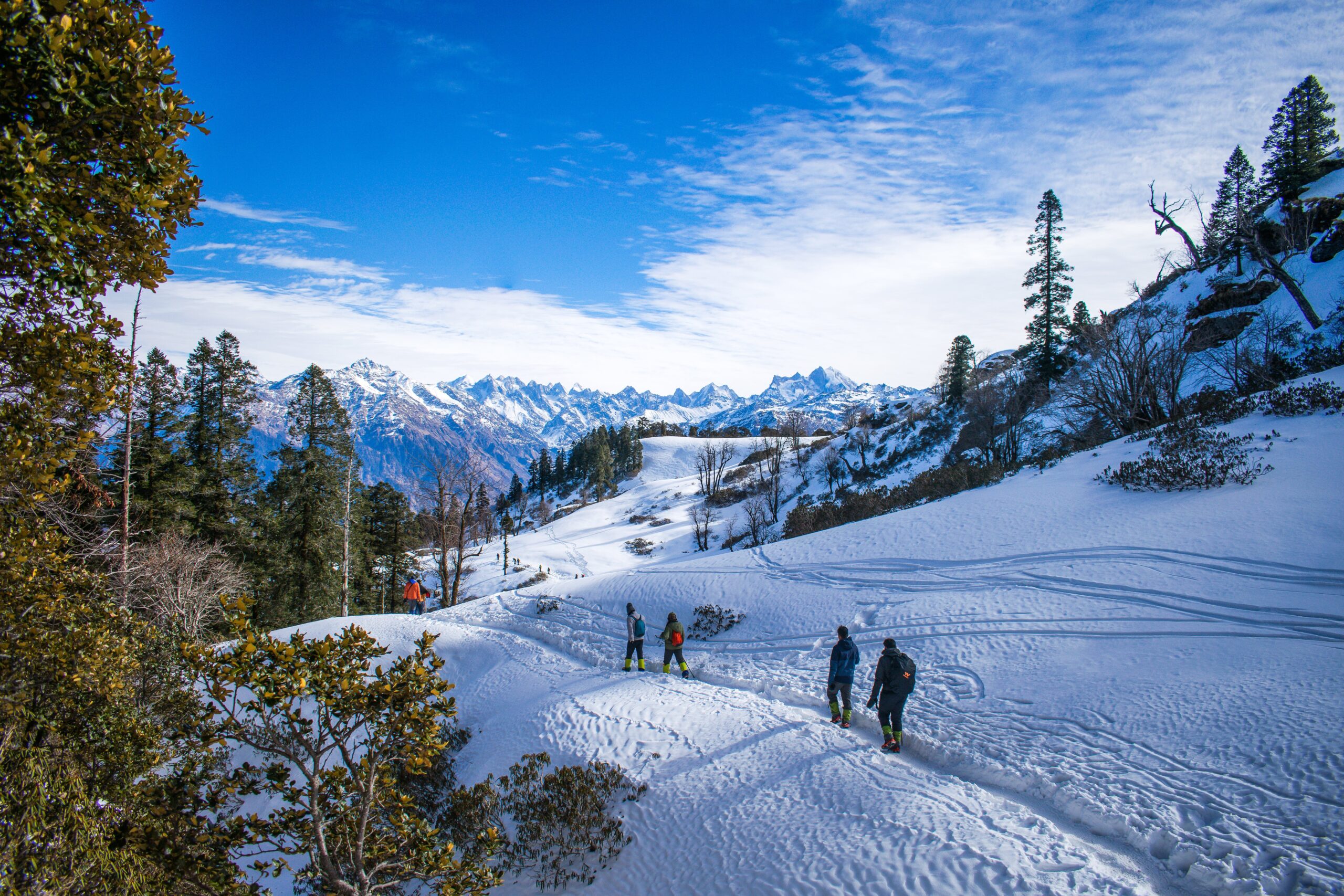Uttarakhand beckons with its serene hill stations, revered temples, historical landmarks, and a plethora of adventurous activities, catering to diverse tourist preferences. To assist in planning an unforgettable trip, here are some suggested itineraries to consider. For a more personalised experience, reaching out to travel operators or tour guides would be beneficial.
10 Places to visit in Uttarakhand:
1. Kedarnath:
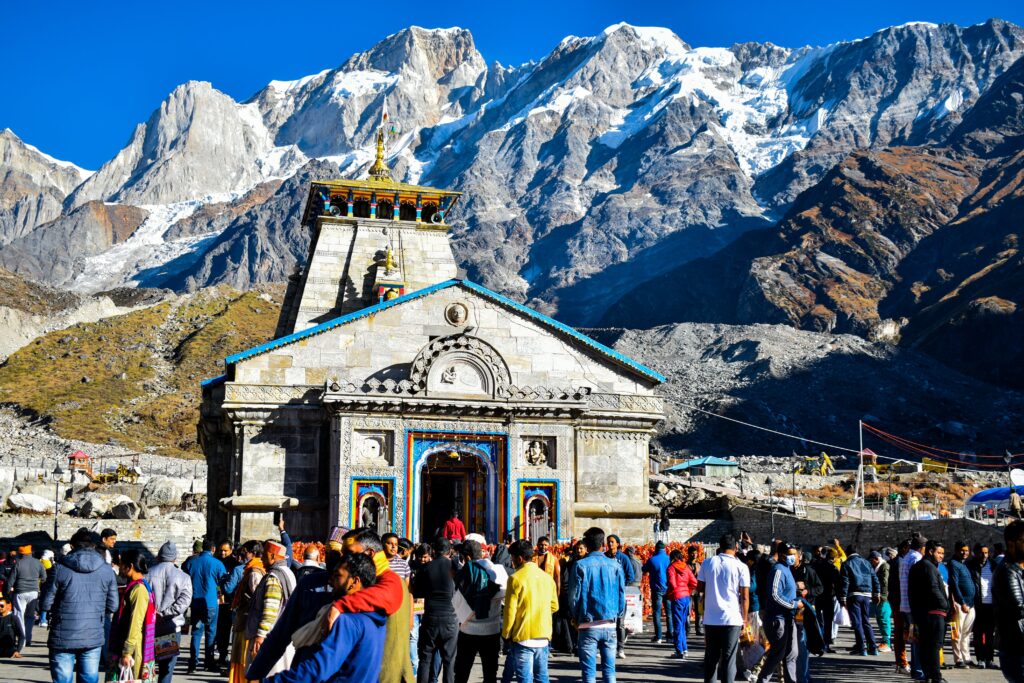
Out of 10 Places to visit in Uttarakhand, one of the holy places, Kedarnath holds immense significance for Hindus, being a revered pilgrimage spot in India. Situated in Uttarakhand’s Rudraprayag district, it draws millions of devotees annually. The spiritual essence of Kedarnath, complemented by its breathtaking natural splendor, creates an irresistible allure that captivates visitors. Kedarnath holds immense significance for Hindus, being a revered pilgrimage spot in India. Situated in Uttarakhand’s Rudraprayag district, it draws millions of devotees annually. The spiritual essence of Kedarnath, complemented by its breathtaking natural splendor, creates an irresistible allure that captivates visitors.
What is the best time to visit Kedarnath?
The ideal periods to explore Kedarnath are typically between September to October and from May to June. These times offer favorable conditions with melted snow and minimal rainfall. However, May can be quite crowded as it marks the peak tourist influx. Kedarnath undergoes a closure of about six months, from November to March annually, due to heavy snowfall. The temperature during this period usually ranges between approximately 5 to 18 degrees Celsius. Another opportune window to visit the Kedarnath Temple is during the pre-winter months of September to October. On the contrary, the monsoon season from July to August brings intense rainfall, triggering landslides and obstructing travel in Kedarnath.
2. Tungnath:
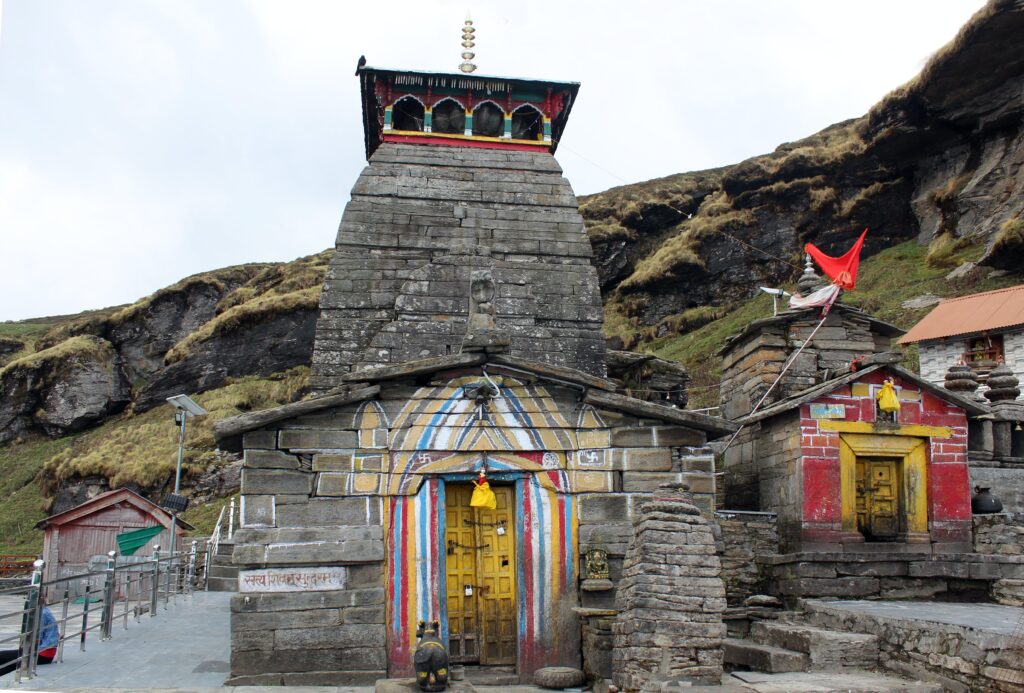
Nestled in Uttarakhand, the Garhwal Himalayas unfold a breathtaking landscape adorned with lush greenery, glistening rivers, snow-capped peaks, and verdant forests. This region boasts an array of trekking trails catering to all levels, from novices to seasoned adventurers. Among these, the Tungnath trek stands out as an accessible and thrilling route, promising an unforgettable journey. The unspoiled natural allure and the mountainous ambiance hold a captivating charm for all, providing ample choices for adventure enthusiasts. Exploring the Garhwal Himalayas through trekking allows one to delve into its scenic trails and panoramic vistas, a rewarding experience after an arduous yet fulfilling trek.
What is the best time to visit Tungnath?
The prime period to explore Tungnath stretches from April to November. In the summer months, the town flourishes with vibrant colors, offering fresh, invigorating air. The peaks adorn themselves with a verdant blanket of pine, deodar, and rhododendron. However, during the monsoon, the region is susceptible to landslides, thus it’s advisable to steer clear during this time.
3. Nainital:
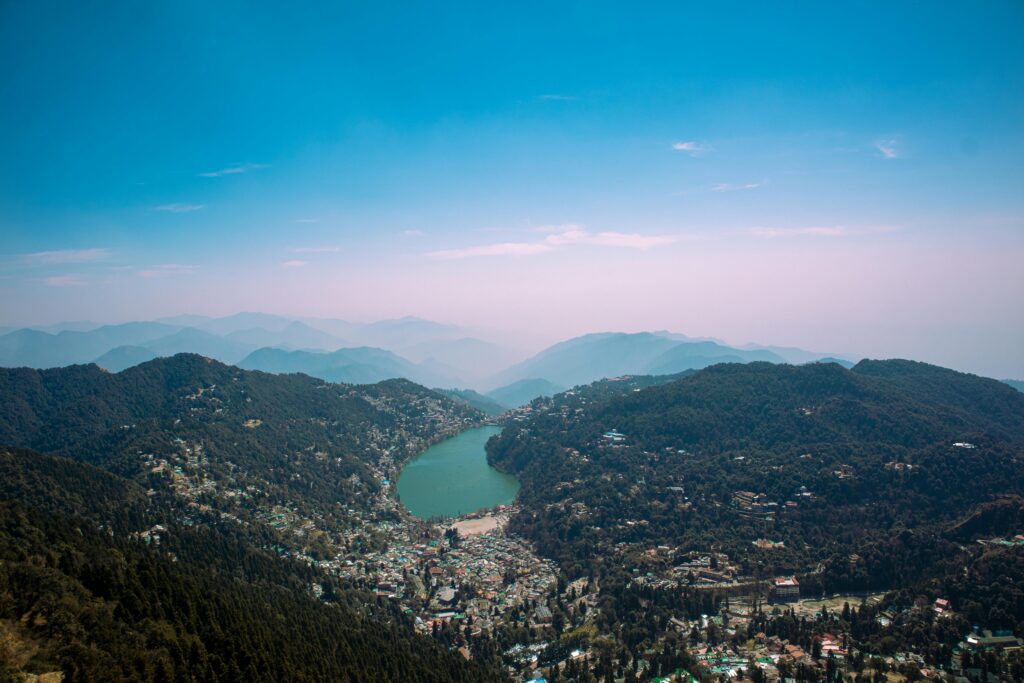
Nainital, an enchanting Himalayan lakeside retreat, stands as a quintessential hill-station and a beloved destination in Northern India. Often referred to as the ‘Lake District,’ it nestles amidst the lofty Kumaon Himalayas, perched approximately 2,000 meters above sea level. Embraced by seven hills famously known as ‘Sapta-Shring’—Ayarpata, Deopata, Handi-Bandi, Naina, Alma, Lariya-Kanta, and Sher-Ka-Danda—this picturesque town boasts majestic mountains and the glistening waters of its central jewel, Naini Lake, which significantly contribute to its scenic allure. The lake, adorned with vibrant sailboats on most days, holds a mythological tale attributing its creation to the goddess “Sati’s” eyes, believed to have fallen here as carried by Lord Shiva after her demise.
What is the best time to visit Nainital?
The best time to visit Nainital is May-June which is also the peak season. Nainital has a pleasant climate throughout the year, making it a year-round destination. The average temperature from April to July ranges around 23 degrees Celcius.
July to September is the monsoon season in Nainital, with heavy rainfall. There are chances of landslides during this time. October to February is the winter season in Nainital. The average temperature ranges around 15 degrees Celcius. To experience snow, visit Nainital in January.
4. Kausani:
Out of 10 Places to visit in Uttarakhand, Kausani holds a unique charm as a serene hill village in Uttarakhand, often hailed as the ‘Switzerland of India.’ It’s a haven for backpackers seeking solace and a haven for writers seeking inspiration amidst its tranquil setting.
Nestled beneath the warm embrace of the setting sun and the verdant hills, Kausani boasts a breathtaking panorama of the Himalayan giants, including Trishul, Nanda Devi, and the formidable Panchachuli peaks.
What is the best time to visit Kausani?
The optimal times to explore Kausani are typically from April to June and October to February. Its strategic location atop a densely wooded ridge makes it a magnet for tourists, particularly from April to June, when the climate remains comfortably cool for daytime exploration. Similarly, the winter months, spanning from October to early February, with temperatures around 9 degrees Celsius, offer an enjoyable experience for sightseeing during the day.
5. Munsiyari:- The Little Kashmir
Out of the 10 Places to visit in Uttarakhand, Munsiyari, a charming village within Uttarakhand’s Pithoragarh district, rests amidst the snow-crowned peaks of the Himalayas. It presents breathtaking views of natural beauty, nestled at an elevation of 2298 meters above sea level. Translated to mean ‘place with snow,’ Munsiyari is also fondly known as ‘Little Kashmir.’
What is the best time to visit Munsiyari?
Offering splendid weather year-round, Munsiyari’s summer unveils clear, picturesque views of peaks and an array of trekking opportunities. The season gifts visitors a refreshing escape from sweltering heat, embracing them with a cool climate. Adventurers seek their paradise here, as Munsiyari boasts challenging trekking trails, river rafting, and hiking opportunities.
Winter, spanning from November to mid-March, blankets the entire region in snow, creating an idyllic setting for couples and honeymooners. Skiing and various snow sports become available during this enchanting season. However, during the monsoon, heavy rainfall and landslides pose risks, making it advisable to avoid travel to Munsiyari during this time.
6. Auli:

Out of 10 Places to visit in Uttarakhand, Auli captivates with its natural splendor—orchards filled with apples, ancient oaks, and pine trees create a picturesque landscape. Beyond skiing, the region offers a plethora of trekking opportunities amidst the Garhwal Himalayas, treating adventurers to breathtaking snow-clad mountain vistas. As a renowned hill resort dating back to the 8th Century AD, Auli is managed by the Garhwal Mandal Vikas Nigam Limited (GMVL), overseeing its ski resort and rental shop.
Auli stands out as a premier skiing destination in India, lauded for its pristine slopes and unspoiled surroundings. Adorned with apple orchards, oaks, and deodars, this hill town boasts several ski resorts nestled in the Himalayas. Resting at an elevation of 2800 meters above sea level, it overlooks iconic peaks like Nanda Devi, Mana Parvat, and Kamat Kamet. Furthermore, Auli is surrounded by various religious sites, believed to have been blessed by the visit of Shankracharya.
What is the best time to visit Auli?
For skiing enthusiasts, the prime window to visit Auli spans from December to March. However, Auli welcomes visitors year-round, each season offering its unique appeal. From April to June, the summer months offer delightful weather, providing a pleasant experience. Between May and November, Auli retains its charm, offering ideal conditions for outdoor leisure activities.
7. Musoorie:
Nestled in Uttarakhand, Mussoorie rests at an impressive elevation of 2005 meters or 6580 feet above sea level. This station is celebrated for its diverse flora and fauna, offering breathtaking panoramic views of the Dehradun Valley from its front face, and a backdrop featuring snow-capped Himalayan peaks.
What is the best time to visit Mussorie?
The best time to visit Mussoorie is in the summer season from April to mid-July when the weather is ideal for sightseeing. This is also the peak season in Mussoorie and Dehradun. Another good time to visit Mussoorie is from September to mid-November to experience a breathtaking view of mist enveloped Himalayas. To experience snowfall, December to February is the best time to visit Mussoorie. Avoid visiting Mussoorie during the monsoon from 15 July to 15 September.
8. Haridwar:
Out of 10 Places to visit in Uttarakhand, The Haridwar city rests on the right bank of the Ganges river, nestled at the foothills of the Shivalik ranges. Haridwar holds immense reverence among Hindus, serving as a pivotal site for significant religious gatherings and offering access to various revered places of worship. Among these events, the Kumbha Mela stands out, occurring every 12 years in Haridwar. This festival draws millions of pilgrims, devotees, and tourists who assemble to partake in ritualistic bathing along the Ganges banks, seeking spiritual purification and liberation from sins to attain moksha.
What is the best time to visit Haridwar?
The optimal period for a Haridwar visit spans from October to February, offering pleasant weather. Nonetheless, Haridwar maintains a moderate climate year-round, ensuring devotees can engage in various ceremonies and rituals consistently. For pilgrims specifically, July’s Kanwar Mela and October’s Diwali festivities stand out as prime times to experience the city’s religious fervor.
9. Rishikesh:
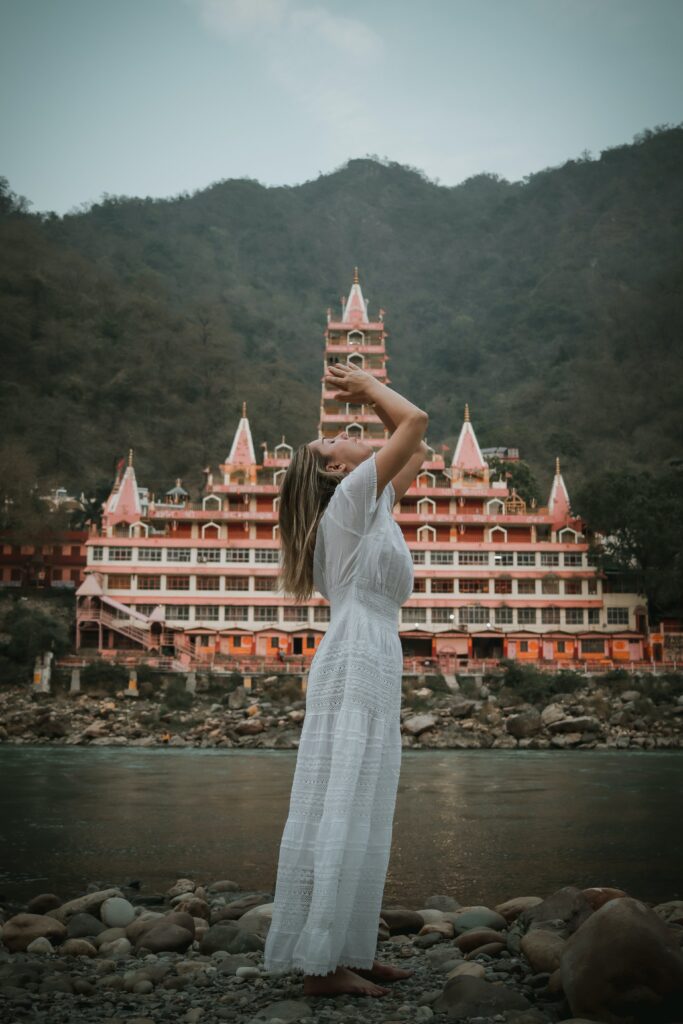
Out of 10 Places to visit in Uttarakhand, Rishikesh is recognized as the “Gateway to the Garhwal Himalayas” and acclaimed as the “Yoga Capital of the World,” this city has been hosting the annual “International Yoga Festival” every first week of March since 1999. Rishikesh maintains its status as a vegetarian-only and alcohol-free city, contributing to its distinct ambiance and cultural ethos.
What is the best time to visit Rishikesh?
The ideal periods for indulging in white water rafting in Rishikesh fall between September to June, particularly November being another opportune time. Additionally, from February to early May, Rishikesh offers a favorable climate for visitors. The city hosts the renowned International Yoga Festival during the first week of March. However, it’s advisable to avoid visiting Rishikesh in the scorching summer months of May and June due to extremely high temperatures, making sightseeing quite uncomfortable.
10. Jim Corbett National Park:
Out of 10 Places to visit in Uttarakhand, Corbett National Park spans across an area of 520.8 km2 (201.1 sq mi), encompassing a diverse terrain of hills, riverine belts, marshy depressions, grasslands, and a sizable lake. The elevation within the park varies from 1,300 to 4,000 ft (400 to 1,220 m). Winter nights bring cold temperatures, while days are characterized by bright sunshine. Rainfall occurs between July and September, contributing to the park’s sub-Himalayan geographical and ecological traits.
The park primarily features dense, moisture-laden deciduous forests dominated by trees like Shorea robusta (sal), haldu, peepal, rohini, and mango. Forested areas cover approximately 73 percent of the park, with grasslands spanning about 10 percent of the region. Corbett National Park boasts a rich biodiversity, hosting around 110 tree species, 50 mammal species, 580 bird species, and 25 reptile species within its bounds.
What is the best time to visit Jim Corbett National Park?
The best time to visit Jim Corbett National Park is between November and February i.e, during the winter season when all the zones are open, and you can spot the most animals. Another good time to visit Corbett is during summers which is the best time to spot most animals near water bodies. Monsoons (June- August) are likely not ideal since the park remains closed most of the time during these months.
Jim Corbett National Park Opening Dates:
The accessibility of Jim Corbett’s five zones varies throughout the year. The Jhirna Zone welcomes visitors year-round, offering bird sightings and occasional tiger encounters. Sitabani Zone also remains open all year, featuring drier terrains with rocky plains that remain navigable even during the monsoon season.
Among the sought-after zones, Dhikala Zone stands out for its higher tiger population. However, it’s accessible only from November 15 to June 15 annually. Similar seasonal access applies to the Durga Devi Zone, operational between November and June. The Bijrani Zone, open from October to June, shares this seasonal pattern due to its hilly terrain and dense forests, which pose a higher risk of landslides. These zones’ roads are closed during the monsoon for safety reasons.
It’s important to note that the park closes at night, and overnight camping inside the premises is not permitted.
For more updates on Travel click on Travel

